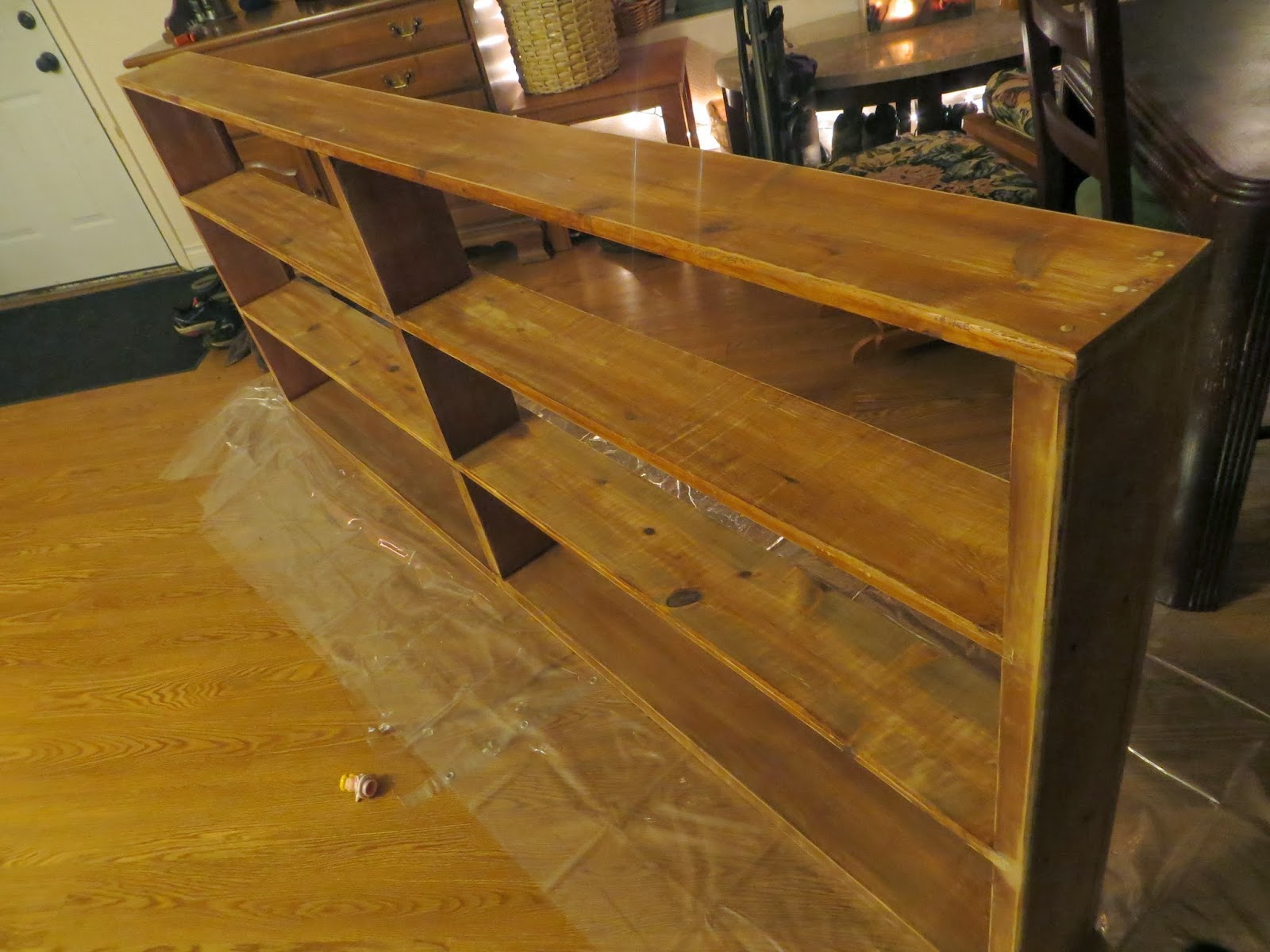After giving it a thorough wipe-down, I broke out the electric sander. Using a heavier, paint-removal grit helped speed the process of stripping the old paint.
In addition to paint removal, I also took the time to round each edge on the front of the shelf unit to give it a more professional finish.
Because I planned to re-paint, I did not bother to remove all the black paint. I just focused on making a nice clean surface on the front of the unit, and roughed up the surfaces on the rest to accept paint more readily.
The fun part was deciding how to paint the shelf!
I normally like a bit of contrast, but a few of the shelves were imperfectly level. Painting it white and slapping it on a dark wall would only serve to highlight the imperfections of the piece rather than the items on display.
Since my walls are dark blue and green in the room I chose, I painted the shelf navy blue. I had some Official Seahawks Navy left over from my bathroom renovation, and a shelf this size barely made a dent in the can, even with 2 coats!
Finally, the second coat was dry and ready to hang. I like to give pieces a full 24 hours to dry hard before setting objects on the shelves, so there is less chance of the items sticking to the fresh paint job. Now all that remains is to add the trinkets!
Yes, my bedroom has a big mural around the whole thing, a tree skyline with a dark sky above filled with glowing stars. I have a problem with insomnia. Being in a dark serene place with stars is so peaceful.
Thanks for following my crafting and costuming blog at Deep Forest Groove on G+.
For more information, find me on Facebook @ www.facebook.com/islesofday






























